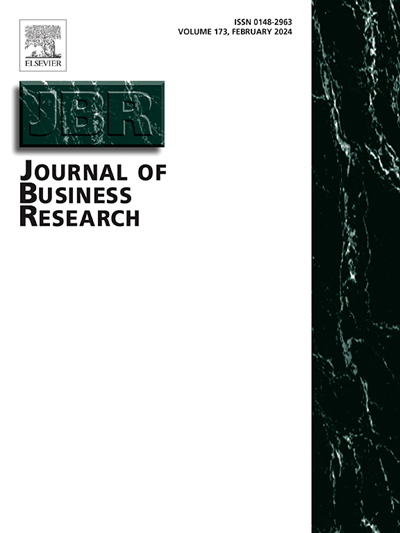Order or disorder? The impact of product display on consumer purchase intention
IF 9.8
1区 管理学
Q1 BUSINESS
引用次数: 0
Abstract
Existing literature suggests that disordered displays of in-store products may have mixed effects. Compared to in-store displays, products in online pictorial advertisements place greater emphasis on visual elements to highlight product traits. In practice, both ordered and disordered product displays are commonly used in social media advertisements. However, how do consumers perceive these different visual presentations? Drawing on Spatial Metaphor Theory, we conducted a series of studies, including an eye-tracking experiment, a field experiment, and three scenario studies. Our findings indicate that disordered (vs. ordered) displays can enhance consumers’ perceived advertising vividness and brand innovativeness, thereby increasing purchase intentions. This effect diminishes under conditions of high cognitive load, suggesting that consumers may be too overwhelmed to interpret the spatial signals conveyed by disordered displays. This research aims to offer concrete guidance for online advertising presentations and provide insights into the optimal timing and target consumer segments for such advertising campaigns.
有序还是无序?产品展示对消费者购买意愿的影响
现有文献表明,店内产品的无序陈列可能会产生复杂的影响。与实体店展示相比,网络图片广告中的产品更注重视觉元素,突出产品特征。在实践中,有序和无序的产品展示在社交媒体广告中都很常见。然而,消费者如何看待这些不同的视觉呈现呢?利用空间隐喻理论,我们进行了一系列的研究,包括眼动实验、实地实验和三个场景研究。我们的研究结果表明,无序(与有序)展示可以增强消费者感知广告的生动性和品牌的创新性,从而增加购买意愿。在高认知负荷的情况下,这种效应减弱,这表明消费者可能过于不知所措,无法解释无序显示所传达的空间信号。本研究旨在为网络广告展示提供具体的指导,并为此类广告活动的最佳时机和目标消费者群体提供见解。
本文章由计算机程序翻译,如有差异,请以英文原文为准。
求助全文
约1分钟内获得全文
求助全文
来源期刊

Journal of Business Research
BUSINESS-
CiteScore
20.30
自引率
10.60%
发文量
956
期刊介绍:
The Journal of Business Research aims to publish research that is rigorous, relevant, and potentially impactful. It examines a wide variety of business decision contexts, processes, and activities, developing insights that are meaningful for theory, practice, and/or society at large. The research is intended to generate meaningful debates in academia and practice, that are thought provoking and have the potential to make a difference to conceptual thinking and/or practice. The Journal is published for a broad range of stakeholders, including scholars, researchers, executives, and policy makers. It aids the application of its research to practical situations and theoretical findings to the reality of the business world as well as to society. The Journal is abstracted and indexed in several databases, including Social Sciences Citation Index, ANBAR, Current Contents, Management Contents, Management Literature in Brief, PsycINFO, Information Service, RePEc, Academic Journal Guide, ABI/Inform, INSPEC, etc.
 求助内容:
求助内容: 应助结果提醒方式:
应助结果提醒方式:


